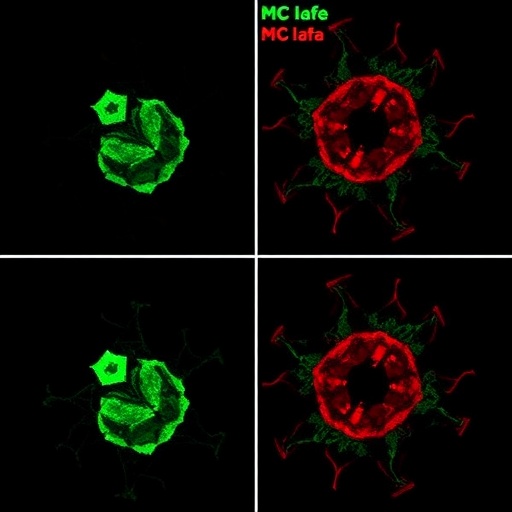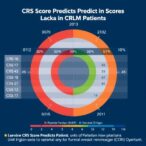
In the ongoing quest to unravel the metabolic intricacies of cancer cells, a groundbreaking study has now revealed the potent effects of 6-methoxyflavone on glycolytic energy metabolism within HeLa cervical cancer cells. Published in BMC Cancer, this work sheds light on how this naturally derived compound disrupts critical metabolic pathways, potentially offering a promising new strategy to combat cervical cancer.
Cancer cells are notorious for their altered metabolism, often characterized by an elevated glycolytic rate even in the presence of oxygen—a phenomenon termed the Warburg effect. This adaptation not only fuels rapid proliferation but also contributes to tumor progression and resistance to therapy. Targeting glycolysis, therefore, represents a compelling avenue for anticancer intervention. However, identifying agents that can selectively and effectively modulate glycolytic metabolism without harming normal cells has remained challenging.
The research team utilized a comprehensive suite of advanced proteomic and metabolomic technologies to decipher the molecular impact of 6-methoxyflavone on HeLa cells. Tandem mass tag (TMT) proteomics enabled them to quantitatively profile global protein expression changes, revealing significant downregulation in proteins directly involved in the glycolysis pathway. Complementing these findings, parallel reaction monitoring (PRM) proteomics validated the reduced abundance of several key glycolytic enzymes, underscoring a consistent suppression of this vital energy-generating cascade.
Beyond proteins, the metabolome landscape was interrogated using both untargeted and targeted metabolomic analyses. These approaches uncovered decreased levels of critical glycolytic intermediates and metabolites, confirming that 6-methoxyflavone not only alters protein expression but also visibly disrupts cellular metabolic flux through glycolysis. Such metabolic reprogramming is crucial as it deprives cancer cells of the energy and biosynthetic precursors needed for their uncontrolled growth.
Importantly, the study delved deeper into molecular mechanisms by analyzing alternative splicing events, novel transcript formation, and domain alterations in glycolysis-related genes. These structural gene and protein modifications hint at a complex regulatory network influenced by 6-methoxyflavone, affecting not only protein abundance but also their functional integrity and interactions within the cytoplasm.
To further clarify molecular interactions, researchers employed in silico molecular docking coupled with non-covalent interaction analyses. These techniques highlighted how 6-methoxyflavone exhibits high binding affinity to nine critical glycolysis-related proteins, binding specifically through non-covalent interactions. This affinity suggests a direct inhibitory effect of the compound on enzyme activity, which was experimentally substantiated by the notable suppression of pyruvate kinase activity—a pivotal step in glycolysis.
At the cellular level, glycolytic function was quantitatively assessed via glycolysis stress tests, which revealed that treatment with 6-methoxyflavone decisively reduced the basal glycolytic rate, maximum glycolytic capacity, and glycolytic reserve of HeLa cells. These findings collectively indicate that the compound impairs the energetic flexibility of cancer cells, potentially sensitizing them to metabolic stress and therapeutic assault.
Beyond in vitro assays, the study explored clinical correlations by integrating patient data. Analyses demonstrated that glycolysis-related gene expression levels influenced by 6-methoxyflavone correlated with key clinical features, survival outcomes, and immunological parameters in cervical cancer patients. This bridge between molecular findings and clinical relevance suggests potential translational applications for this compound in prognostic assessment and therapy design.
Particularly intriguing were observations connecting 6-methoxyflavone activity with tumor immune microenvironment modulation. Alterations in immune cell infiltration and immune checkpoint marker expression upon compound treatment suggest that, beyond metabolic disruption, 6-methoxyflavone may also prime tumors for enhanced immunotherapeutic responsiveness.
The multifaceted nature of 6-methoxyflavone’s actions underscores its promise as an anticancer agent. By targeting the fundamental bioenergetic machinery of cancer cells and potentially modulating immune milieu, it could represent a dual mechanism to suppress tumor growth and improve patient outcomes.
This study not only provides novel mechanistic insights into how flavonoid derivatives inhibit glycolysis but also opens avenues for combination therapy strategies. For instance, pairing metabolic inhibitors like 6-methoxyflavone with immune checkpoint blockade might synergistically enhance therapeutic efficacy against cervical cancer.
Moreover, the rigorous methodological framework—combining state-of-the-art proteomics, metabolomics, computational modeling, and clinical data analysis—sets a benchmark for future cancer metabolism research. Such integrative approaches enable comprehensive evaluation of candidate molecules, bridging basic science discoveries with precision medicine initiatives.
While the current research focuses specifically on HeLa cells and cervical cancer, the implications extend broadly. Glycolytic dysregulation is a hallmark of diverse cancers, raising the possibility that 6-methoxyflavone or structurally related compounds could exert similar metabolic inhibitory effects across multiple tumor types.
Further investigations will be essential to determine the in vivo efficacy, safety profile, and pharmacokinetics of 6-methoxyflavone. Additionally, probing its impact within the complex tumor ecosystem, including stromal and immune cell interactions, will be crucial to fully harness its clinical potential.
In conclusion, the identification of 6-methoxyflavone as a glycolysis inhibitor marks a significant step forward in cancer metabolism targeting. By impairing energy production at multiple molecular levels, it effectively cripples the metabolic flexibility cancer cells rely on, paving the way for novel therapeutic strategies in cervical cancer management.
—
Subject of Research: Regulation of glycolytic energy metabolism by 6-methoxyflavone in cervical cancer (HeLa) cells.
Article Title: 6-Methoxyflavone inhibits glycolytic energy metabolism in HeLa cells.
Article References:
Zhang, C., Chen, L. 6-Methoxyflavone inhibits glycolytic energy metabolism in HeLa cells.
BMC Cancer 25, 719 (2025). https://doi.org/10.1186/s12885-025-14133-9
Image Credits: Scienmag.com
DOI: https://doi.org/10.1186/s12885-025-14133-9
Tags: 6-methoxyflavone effects on HeLa cellsadvanced proteomic technologies in researchanticancer interventions and metabolismcervical cancer treatment strategiesenergy metabolism in cervical cancer cellsglycolysis inhibition in cancermetabolomic impact of natural compoundsnatural compounds in cancer therapyproteomic analysis of cancer metabolismselective modulation of cancer metabolismtargeting glycolytic pathways in cancer therapyWarburg effect and cancer metabolism


